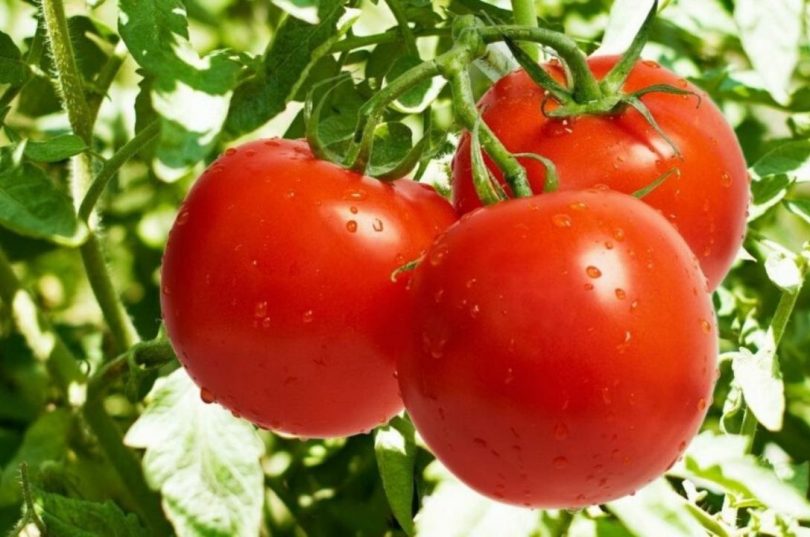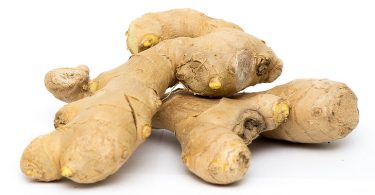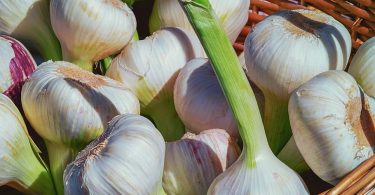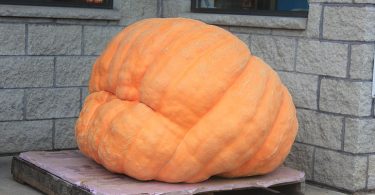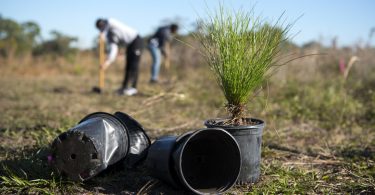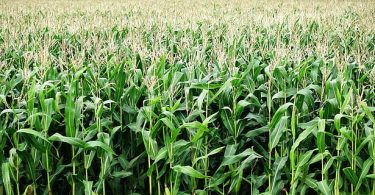So this is it. We’re doing that thing, where we’re helping you with your tomato plants, THE most common garden crop in North America, and Europe, and probably somewhere else too. We assume here that you know the basics of growing tomatoes, such as full sun, full water, full nutrients, etc. A long read, but hopefully worth it. Enjoy!
Choosing
The tomato being the most popular garden crop, its maintenance is very well documented. Before going further into the topic, readers should know that there exist indeterminate and determinate tomato varieties. Determinate varieties first grow vegetatively (roots, stems and leaves), then stop and produce fruits, giving a single early-season harvest. Indeterminate varieties grow and grow and grow. Determinate varieties usually do not need to be supported or pruned, while indeterminate plants absolutely need to be supported, and most people like to prune them for reasons that will be explored further below.
There are different varieties of tomatoes with different advantages and disadvantages. Without going into great details about that, let’s just say that there are tomatoes of different sizes (cherry, small, medium, and big), different colors (green, black, brown, purple, yellow, red, pink, green zebra, red zebra, etc.), and different shapes (round, beefsteak, pear-shaped, oblong, etc.). There are also varieties that are resistant to certain diseases and conditions, and other varieties that are susceptible to certain diseases and conditions (e.g. drought).
There are also varieties that stay very short, which are denominated by the qualification of ‘patio’ tomatoes, and are especially well-suited for growing in containers or limited space.
When choosing a tomato seedling, make sure to choose one that is not yellowing, and that isn’t too elongated. Elongated seedlings are characterized by having a long internode (the length of stem between leaves), and thus have less leaves than a healthy seedling of a similar height. This usually happens because of improper lighting or crowding in the greenhouse, forcing the seedlings to reach out for light, and can result in more fragile stems. Contrary to the common belief, do not pick seedlings that already have flowers or fruits on them, unless it’s a patio variety. The first thing that a tomato plant should be doing upon transplanting is growing an extensive root system and a sufficient foliage to harvest all the nutrients and energy it needs to grow lots of tomatoes (and hell do they need a lot!). Once a tomato plant has started producing fruits, most of its energy goes into maturing these fruits. For this reason, such seedlings often stall growth when transplanted and get caught up, and even surpassed, by smaller fruit-less or flower-less seedlings, which then proceed to grow an earlier and more bountiful harvest later in the season (i.e. at the time when they should be). If seedlings with flowers is all you have, because of, say, cold temperatures that are extending too late into the growing season, the fruits and flowers can be removed upon or before transplantation, so the plant can focus on what matters (mainly roots). It may hurt to do so, but it’s for your own good!
As a last piece of advice, make sure not to transplant tomato seedlings too early, that is when the weather is still too cold (even if it shouldn’t be!). A lot of problems of stalled growth, root diseases, lower productivity, and bad pollination leading to catfacing can result from planting tomatoes too early. When transplanting, plant the seedling a few inches deeper than in its original pot, so as to bury the base of the stem. Tomato plants grow roots from there, which help for support and nutrient catching.
Support
Once the plant is a bit more than a foot tall (30 cm), some sort of support should be provided, or else it will slump and will be hard to get back up properly. There are four methods for supporting tomatoes : staking, which consists of driving a pole into the ground next to the tomato plant and attaching the latter to the pole as it grows; trellising, with a trellis net; caging, with a tomato cage, cone, or tower; and using a twine attached to a hook or a horizontal bar over the plant. In general, providing support the earlier is the better, as big tomato plants are much harder to train and could be damaged in doing so. Staking and twining are good methods to add at the last minute, when the plants are starting to slouch over. Trellising and caging are basically impossible to do unless the plants are small enough (under one foot tall).
Staking can be done with bamboo poles, concrete rebar, T-posts, wood posts, or any other solid support. Drive the pole at least one foot into the ground to make sure it will not fall over under the weight of a 6-foot tall tomato plant full of fruits. It is better to put the post at or before the time of transplant, so as not to damage the roots of the plant. If pruning to one, two, or three stems (see below), put one post per stem. Attach the stem to the post using pieces of soft fabric to avoid damaging the stem by friction. If using twine, make sure it is thick, otherise it could cut the stem. Attach every 8-12 inches using a figure 8, with the stem in one of the loop and the pole in the other loop. This leaves enough room for the stem to grow bigger, offers a steady support, and avoids having the stem rub against the pole on windy days. For tomato varieties producing big fruits, the stem can also be attached loosely over each flower cluster using a simple loop, or ‘O’ loop. Pass the ‘sling’ right over where the cluster meets the stem, and attach it 6 inches higher on the stake (see image below). This removes some weight from the stem, which could otherwise bend and crease from the weight of all the fruits.
Trellising is usually done with a big hole mesh netting (around 6-inch-wide holes is optimal). Nylon trellis netting can be found in hardware stores or garden centers, and is usually the favorite of gardeners. The trellis should be 6 feet tall or more, and should almost reach to the ground. Tomatoes can be trained in the trellis by passing the main stem(s) alternatively behind and in front of the net, or around a vertical twine in the mesh. This should be done as the stem grows, otherwise the stem or leaves could be damaged from bending or twisting the stem too much. It is thus not a good support method to add at the last minute.
Caging is done with the short tomato cages or cones most people put around their tomato plants. These are usually not well suited for indeterminate varieties that can reach at least 5 feet in height. There also exist tomato towers or ladders, which are similar to tomato cages but with a square or triangular frame, and are much taller. If put around the plant while it is still small enough, these provide a good method for lazy gardening, as the plant usually needs little to no training, the leaves and fruit clusters resting naturally on the horizontal bars of the tower as they get heavier.
Finally, twining is done by attaching a twine to a stake planted near the base of the plant, or by attaching the twine directly but loosely to the base of the plant, and attaching the other end to a support over the tomato plant. The plant then needs to be trained around the twine, clockise or counter-clockwise, the friction with the twine being what supports the plant. Unlike other methods, it offers no additional support to fruit clusters, and may thus be inappropriate for varieties producing heavy fruits. The twine can be attached over the plant to a hook, a vertical post (this way you can have many plants growing at an angle toward a single post), or a horizontal post (such as with an A-frame). It is a good method for tomato plants that have gotten quite big and need a last minute support method.
Pruning
The main reasons to prune tomatoes are plant health, ease to harvest, and sometimes to save on horizontal space. But first, let’s look at a tomato seedling :
As we can see, the tomato plant usually grows one main stem, from which grow leaves (composite leaves, each of which being one leaf starting from the stem, and not many leaves on one “branch”). It’s possible to keep the tomato plant with only one stem, but it’s also possible to prune for two, three, or four main stems, or not prune at all, for reasons we’ll explore below. What’s important to know is that each stem starts by producing leaves, and then starts producing flowers clusters at a somewhat regular interval.
Now if we look at the plant where the main stem meets a leaf, we can see another stem branching out at a 45° angle between both:
That’s a sucker (that’s really what it’s called). If left on its own, it will become a stem, producing leaves and flowers, but relying on the same root network than the main stem. It is common for suckers to grow again where one has been previously removed, so check your whole tomato plants regularly! Just like the head of the main stem, suckers have a zone of continuous growth at their top. Be sure not to remove the head of the plant while pruning! If that happens, a sucker can be allowed to grow and become the “new” main stem.
A few things can be concluded from this :1) The more stems, the more leaves, and thus the less aeration.2) The more stems, the more tomatoes.3) The more fruits produced, the more nutrient and water needed.3.1) The more nutrient and water needed, the more intensive the culture is and/or the more extensive the root network has to be.
1) HealthMore leaves means less aeration, which means greater chances of developing fungal diseases, especially in a relatively humid climate like Québec. It also makes it easier for diseases and pests to spread from stem to stem, and from plant to plant. This is why most people remove suckers from their tomato plants, allowing a few to grow near the base to obtain two, three, or four stems.
A lot of diseases, and especially fungal diseases, can stay dormant in the soil as spores. When watering your garden, it is possible that some soil may splash on the lowest leaves of your tomato plants, allowing fungal diseases to develop. A first solution is to put mulch under tomato plants, whether black plastic mulch (not any black plastic, though) or woodchips, making sure the mulch doesn’t touch the stem of the plant. Another easy thing to do is to prune the lowest leaves at the bottom 6-8 inches of the plant, once it’s comfortably tall (you don’t want to remove half the leaves from a plant by pruning it).*
It is also possible to remove leaves (especially recommended for diseased leaves), but one thing to keep in mind is to try, as much as possible, not to prune the leaf right above a fruit cluster. The leaves will provide shade to the fruits and avoid problems such as sunscald, which is similar to a sunburn for tomatoes. Sunscald mostly happens when tomatoes are exposed to intense direct sunlight under hot conditions, and although the fruit is still edible, it is also more susceptible to black mold.
2) ProductivityAs has been said, the more stems are allowed to grow, the more tomatoes are produced. For health reasons, as seen above, most people keep up to four main stems and prune all other suckers, although it can be totally ok to let an indeterminate tomato plant go crazy. Apparently, pruning to less stems allows for an earlier harvest, with bigger but less numerous fruits.
3) Nutrients and waterMore growth and more production are only possible if water and nutrients are present in sufficient conditions. For this reason, it is usually preferable to prune container-grown tomato plants to one main stem, because of the limited amount of water that is available in a container. Nutrients can also be limiting in containers, unless the plants are fertilized properly. Water is crucial for good growth, and most importantly for the production of good fruits, which may crack or develop other problems under limited water conditions.
For tomatoes that are grown in the soil, nutrients can also be limiting, but water rarely is. Managing the plants, preventing diseases, and facilitating harvest will be the main reasons why tomatoes grown in soil will be pruned.
For all indeterminate varieties, and even more so for bigger tomatoes, the head should be removed about 4 weeks before the first frost date. When headless, the plant can no longer grow, and spends its energy to the maturing of tomatoes. The head is pinched to make sure that all tomatoes and flowers produced by the plant so far will have enough time to turn into mature tomatoes. Otherwise, green tomatoes that were still expanding in size, and were thus not technically ripening, will never turn red; there’s just no way they’ll ever ripen. Small tomatoes will need less time to ripen, so 2-3 weeks before the first frost date may suffice, but huge tomatoes will need 4 weeks or more.
Simple vs Missouri pruningBefore we let you rush back to your garden, we’ll detail the two different ways of pruning suckers: simple pruning and missouri pruning.
Simple pruning is used for suckers up to 4 inches long. The method is to take the sucker between thumb and forefinger, and to rock it back and forth in order to snap it off clear from the stem. No breakage, no mess, just a clear break. If it doesn’t work, it is because the sucker is too big. Switch to missouri pruning.
Missouri pruning is used to control those larger suckers that escaped your attention and are now becoming a life-sucking stem. The method here is simply to pinch the head of the sucker, or in other words to remove the zone of continuous growth, Simply pinch it off with your fingernails, or use clean pruners.
To remove leaves, cut them near the stem using clean pruners.
More info on growing tomatoes
http://www.gardening.cornell.edu/homegardening/sceneea10.html
Source : http://campuscropsmcgill.blogspot.com/2014/06/the-one-and-most-important-post-on-this.html
